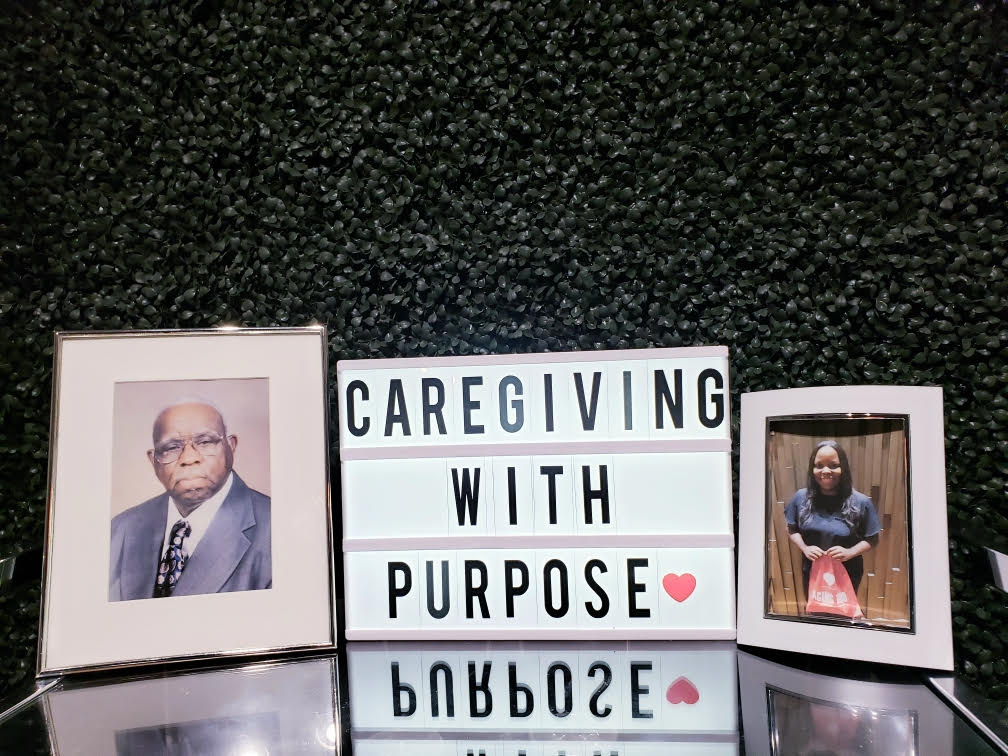Abstract:
Twenty-five percent of all people receiving home- and community-based services (HCBS) are self-directing some or all of these supports. What does this mean for care managers? The Cash and Counseling Demonstration showed areas of possible friction as power shifts to the participant. After defining self-direction, this article presents the new duties needed to help participants self-direct. Whether states assign these additional tasks to care managers or create a new class of support brokers to do this work, the job of the care manager changes. Examples are provided, and the article concludes with lessons for care managers and recommendations for training.
Key Words:
home- and community-based services, self-direction, Cash and Counseling Demonstration, care managers
In the earlier chapters of this issue of Generations the focus has been on care management and how it has evolved. But in recent years a new form of service delivery has taken hold wherein the participant has more control. The National Inventory of Self-Directed Long-Term Services and Supports (2017) collected by Applied Self-direction, LLC, for the 2020 AARP State Long Term Services and Supports Scorecard, showed that more than 1.23 million Americans who have disabilities are engaged in self-direction programs of one kind or another. How does this new way of delivering supports affect care management, and are these approaches compatible?
Under the self-direction model, available under Medicaid, state and Older American’s Act funding, and via Veteran’s-Directed Care, participants with disabilities, or their designated representative, can recruit and supervise aides of their choosing, including close family members. Some programs allow participants to manage and control a budget, which they can use not only to employ direct care workers but also to pay for other services (e.g., assistive devices, home adaptations, personal protective equipment, or transportation).
In self-direction, participants garner help from a counselor (also known as a support broker, coach, information and assistance specialist, or consultant) to think through creative ways to meet their needs for safely remaining in the community, develop back-up plans for any time their workers may not be available, recruit, hire and manage workers, and locate necessary resources. For the remainder of this article such individuals are called support brokers. These participants also have the help of financial management services agencies that can pay bills, act as payroll agents, and manage an individual budget if the program provides this option.
The Cash and Counseling Demonstration, Evaluation and Replication (CCDE) in the late 1990s and early 2000s was the first major randomized control experiment examining the effects of self-direction on a large scale. This demonstration quickly showed the tension between care management and self-direction. Some of the funders wondered if intense care management was needed for all participants. But it was the Preference Study preceding Cash and Counseling that pointed out a basic problem (Mahoney et al., 2004). Those focus groups and surveys showed that the individuals interested in self-direction did not want a traditional care manager under a medical model where the “professional knows best.” They wanted a coach.
The early days of implementation documented an additional quandary. Florida was the only state to try to use existing care managers as support brokers, and under this approach, almost no one signed up. Focus groups with Florida care managers and their supervisors showed that many care managers, particularly those working with older individuals, did not think their clients were capable of self-directing or they felt that if people wanted to self-direct they did not need much help in operationalizing this model (Simon-Rusinowitz et al., 2009).
The final example came when the State of Minnesota arranged a training webinar on the new Cash and Counseling option for county care managers. When the program ended, and the microphones were still live, a couple of care managers were heard to remark, “And they think we’re going to do this!”
The lesson we learned in Cash and Counseling was that workers who have spent much of their professional life taking care of people sometimes find it hard to change to an empowerment model; while others are early believers. The aversion to self-direction some care managers felt is not surprising as it was not until 1994 that “Guidelines for Case Management Practice Across the LTC Continuum” mentioned “Exploration of Participant Preferences” as a standard for case management.
Support Broker Role in Self-Direction
What are the tasks and characteristics of support brokers in self-direction? How are these supports delivered? And, how do these tasks differ from what care managers do? Below are two points of view; a regulatory view and the perspective of participants and their families.
The Centers for Medicare & Medicaid Services (CMS), which pays for the vast majority of self-direction, has specified that Information and Assistance, which includes the work of support brokers, must be available to assist participants in managing their self-directed waiver services (CMS, 2019). CMS bundles a number of duties under the heading of Information and Assistance and gives states significant latitude in deciding who provides these supports (e.g. support brokers, care managers or even financial management service agencies) as long as it is clear who does what and there is no overlap. Both the Section 1915(c) and Section 1915(j) authorities view the roles and responsibilities of the counselor/support broker as fundamentally different from those of a care manager. CMS (2019) defines Information and Assistance in the 1915(c) waiver instructions as:
A Service/function that assists the participant (or the participant’s family or representative, as appropriate) in arranging for, directing and managing services. Serving as the agent of the participant or family, the service is available to assist in identifying immediate and long-term needs, developing options to meet those needs, and accessing identified supports and services. Practical skills training is offered to enable families and participants to independently direct and manage waiver services. Examples of areas for skills training include recruiting and hiring personal care workers, managing workers, and providing information on effective communication and problem-solving. The service/function includes providing information to ensure that participants understand the responsibilities involved with directing their services. The extent of the assistance furnished to the participant or family is specified in the service plan. This service does not duplicate other waiver services, including case management.
Supplementing the regulatory perspective is a sense of what participants and their family caregivers think. In a reanalysis of qualitative interviews with seventy-six Cash and Counseling recipients E. Mahoney, et al. (2019) found that those interviewed saw the job of support brokers as Coaching, Problem Solving, Advocacy and Monitoring. Equally important to these informants was how this work was conducted. Participants said that Familiarity, a Supportive Relationship, Proactive Engagement, Responsiveness, Knowledge, and Cultural Friendliness made the difference between a supportive and an unsupportive support broker.
Perhaps the biggest difference from care management tasks is Coaching. “Doing with, not for” and “Nothing about me without me,” are the mantras that capture this subtle but critical difference. The qualities participants look for in a helpful support broker may not differ much from what they value in a care manager, but, as the support broker’s main job is serving the participant, these qualities have added salience.
But how are support broker services organized and delivered?
From the very start of the Cash and Counseling Demonstration (CCDE) it was clear that states had very different ideas of how to organize and deliver support broker functions (Doty, Mahoney, and Simon-Rusinowitz, 2007; O’Keefe, 2009). Some, for efficiency and coordination reasons, wanted the support brokers to be part of the same organization as the financial management services or (as we already discussed in the case of Florida). They wanted existing care managers to manage both functions. Some states wanted a wide variety of support brokers for participants to select from. Some states wanted the support broker to be hired by the participant; some wanted the cost of support broker services to come out of the participant’s budget, while others feared this would provide a disincentive for the participant to use the support broker as needed. A 2012 article by Randall and Bekteshi, which examined how states organized their support broker functions, showed that this variation continued.
Some states wanted the support broker to be hired by the participant; some wanted the cost to come out of the participant’s budget, others feared this would be a disincentive.
For its part, CMS codified three ways states can organize and pay for support broker services. The upcoming revised Handbook on Self-direction (Assistant Secretary for Planning and Evaluation [ASPE], forthcoming, 2021) summarizes these three options, demonstrating advantages and drawbacks of each.
Option 1: Care Managers Absorb the Information and Assistance Role. Whereas this option has few additional costs other than retraining care managers and adding performance measures to capture their mastery of new duties, it has proven problematic in some instances because participants may need more focused attention than many case managers typically have time to provide, particularly in the pre-enrollment and enrollment stages.
Option 2. Information and Assistance Provided as a Waiver or Program Service. This option requires the creation of a new, separate waiver service. Care managers continue to perform their traditional duties but states must develop protocols for how the two positions interact. Care must be taken to ensure support broker providers are qualified, meet training requirements, and are monitored to guarantee quality services are furnished. Some programs have found it difficult to monitor and oversee the quality of the work performed by large numbers of independent supports brokers or service facilitators, given that Medicaid requirements do not allow states to limit the number of “service” providers under Medicaid waivers. Medicaid rules stipulate that “any willing, qualified provider” must be authorized.
Option 3: Information and Assistance Provided by Contracted Administrative Service. Here the program or managed care entity selects one or more providers through a bidding process. Once again care managers continue to perform their traditional duties, and protocols need to be developed to specify how these two positions interact. Whereas this approach is generally more expensive than trying to rely upon existing care managers to perform both jobs, it can result in greater participant satisfaction as a specialist supplies information about the self-directed option, expedites access to needed services, guides the enrollment process, and assures that the participant is ready to self-direct.
Under options 2 and 3 care must be taken to ensure that care management and Information and Assistance services are not duplicative. Information and Assistance may include activities that nominally overlap some case management services. For example, a support broker may assist participants during the development of a person-centered plan to ensure that their needs and preferences are clearly understood and conveyed to the case manager, who issues approval or authorizations of services in the plan. In general, such overlap does not constitute duplication of services. The division of duties can minimize overlap in other ways. For instance, if the specialist conducts a home visit, the results of that home visit are shared formally with the care manager and can take the place of his or her assignment.
How do the functions of support brokers and care managers differ?
The key difference is “Who’s the Boss?” The power dynamic has changed; in self-direction the participant has the lead. This is not to say that the support broker is silent; far be it. For example, the support broker needs to clearly let the participant know the parameters of the public benefit, including what can and cannot be purchased with their budget. The support broker needs to help the participant locate additional resources, public and private, and, when the participant wants to pursue avenues that carry some risk, the support broker can help the participant draw up a risk agreement making clear what the participant feels is important for their life and that the participant understands the risks. It is important for the participant to understand that self-direction includes constructive feedback and brainstorming. It is not just a matter of doing what you want.
Also, some care managers are responsible for tasks that support brokers generally do not perform, including Eligibility Determination, Establishing the Amount of the Budget, and other Gatekeeper functions. Advocacy is key for care managers and support brokers, but as the CMS guidance makes clear, under the self-direction model the support broker is acting at the behest of the participant.
Some differences between care management and support brokerage become clearer when considering how often peers serve as support brokers, particularly in self-direction programs for people with behavioral health issues. Peers are in a unique position to establish rapport, understand the participant’s situation, and provide personal insights on challenges and resources (Croft et al., 2017; Croft et al., 2019). And, credibility is added as peers do not have to represent the funder in determining eligibility.
Saying care managers and support brokers have different functions does not mean they are incompatible. CMS regulations tell us they have to be compatible, but they need different training and different quality measures. It is a matter of spelling out the roles and responsibilities of each. The real issue is developing and testing ways in which these two distinct roles can best work together to help the participant meet his or her goals.
‘New modules for teaching support broker roles are needed.’
Are there areas where care managers can supplement what support brokers do and thus improve supports for participants? Are there ways care managers and support brokers, working together, can provide more holistic, integrated support?
Examples are emerging in the literature on managed care (Bowers, Owen, and Heller, 2017; 2019 ), but a simple example comes from a recent article on the unmet needs of participants and families in the original Cash and Counseling Demonstration and Evaluation (CCDE) (Mahoney et al., 2019). This study found that the most frequent unmet needs in self-direction were health-related issues including health literacy, as well as environmental problems (e.g., need for adequate housing, transportation or assistive devices)—areas where care managers with specialized expertise can help fill in the gaps.
What Every Care Manager Should Know
Lesson 1: Self-direction is a widespread, proven option. Nearly 25 percent of the people receiving publicly funded home- and community-based services and supports are self-directing, either by managing their own workers (employer authority) and-or by controlling the budget for their supports (budget authority) and developing individualized spending plans tailored to their life situation. Research has shown that the self-direction approach works for all populations, including for older people and people with serious mental health issues; groups in which many doubted their ability to self-direct (Simon-Rusinowitz et al., 2010; Croft et al., 2019 ).
Lesson 2: Self-Direction entails new responsibilities. New duties require new standards and training, and the person providing these new tasks needs to understand that they are working for the participant when they provide these supports.
Lesson 3: Care managers play a vital role in self-direction either by taking on these additional duties or by working closely with a new occupational group known as support brokers.
Lesson 4: Care management and support brokerage are and must be compatible, but there will be tensions as the participant has the lead in self-direction. Mechanisms for resolving differences are needed. Even when roles are clearly defined, there will, at times, be tension over the limits of self-direction and size and uses of the budget. Conflict resolution skills, exceptions policies, and appeals procedures will be important. Participants need to know who they go to for what.
Lesson 5: Under self-direction new forms of quality management are needed. Assuring participants can attain their goals is paramount.
Details for a robust self-direction quality assurance and improvement system for Information and Assistance services can be found in Chapter 6 of the Revised Self Direction Handbook, produced by the Office of the Assistant Secretary for Planning and Evaluation (in press).
Under any organizational arrangement, caseload size should be carefully examined so the person in that position has enough time to do the work with which they are charged. Neither care managers nor support brokers can operate efficiently without knowledge of, and appreciation for, the other’s duties. Models and preferred practices are needed showing how care management and support brokerage can divide duties and be supportive. In the interim, states are the laboratories for testing different options.
Implications and Recommendations for Training
A 2013 survey of the Aging and Disability Network, including 224 Area Agency on Aging (AAA) directors and 192 AAA social services staff members, found that self-directed practices were ranked first among areas where additional training was needed (Hooyman, Sciegaj, and Dize, 2014). But, providing this training is not easy, as the way states implement support brokerage can differ widely.
Recommendation 1: A large part of the training of care managers and support brokers is generic and can be done jointly.
There are many similarities between care management and support brokerage; the characteristics of an ideal support staff, e.g., the values, knowledge, and skills needed are much the same. New person-centered planning requirements are pushing care managers to pay attention to participant preferences.
Regardless of where the functions are positioned within the program design, the care manager continues to play a critical role in service planning, implementation, and monitoring. Care managers and support brokers both need training on topics ranging from defining and understanding the history, values and principles of self-direction and how to introduce it to participants, to determining the capacity of participants to self-direct and whether a representative is needed, to understanding the self-directed process, including the basics of developing a spending plan and how to assess quality.
Recommendation 2: New modules for teaching support broker roles are needed.
The tasks of care managers and the tasks of support brokers, even when performed by the same person, are different. A survey of 140 counselors in three states found that most did not have a clear understanding of their roles and responsibilities and did not feel prepared to help participants to solve problems. They felt that their training was insufficient and said they needed more information to understand and assist participants with employer-related duties; more resources to help participants with recruiting, hiring, and managing workers; more detailed and updated policies and procedures; and additional clarification on roles and responsibilities (Jeon et al., 2015.)
Given the results of this study, programs should evaluate the adequacy and quality of counselor training, including the content of policy manuals and the effectiveness of specific training programs or presentations. Mahoney, Mahoney, and Inoue (2018), after reviewing state 1915c applications that included self-direction, found few states listed any required background in person-centered planning, never mind self-direction. Except for waivers serving people with developmental disabilities, it was rare to see mention of required knowledge of the population being served.
Recommendation 3: Training needs to have an experiential component. Some on-the-job, state-specific training will be needed. Opportunities for continuing education are essential. Cross-training of care managers and support brokers makes sense.
Early efforts to develop training specific to support brokers (McInnis-Dittrich, Simone, and Mahoney, 2006) relied heavily on role-playing.
The best-known efforts to develop training on person-centered planning and self-direction is described in the seminal work of Sciegaj et al., (2019) in an article called, “The Times They Are A changing.” This work can guide readers toward training modules, training videos, and relevant research developed and collated as part of this study by the Council of Social Work Education, the National Resource Center for Participant-Directed Services and nine social work programs from around the country—each of which infused self-direction throughout its curricula and provided field placements where students could experience and practice the self-direction approach.
Recommendation 4: Implementation research is needed on the effects on and for participants of different organizational options and types of training. Effects on staff retention and program efficiency also should be evaluated.
We are continuing to evolve new ways in which care management and self-direction can work together to make a difference for participants. That is the litmus test for success. Hopefully, this article provides some guidance, raising provocative questions, making necessary tensions visible, and pointing toward next stages in the development of the self-direction option and how care managers and support brokers can work together.
Kevin J. Mahoney, PhD, is professor emeritus at Boston College School of Social Work in Boston. He may be contacted at kevin.mahoney@bc.edu. Ellen K. Mahoney, PhD, is an associate professor at the Connell School of Nursing at Boston College. Suzanne Crisp is senior advisor at Public Partnerships, LLC (PPL), in Little Rock, Arkansas.
References
Applied Self Direction, LLC (2017). National Inventory of Self-Directed Long-Term Services and Supports for the 2020 AARP State Scorecard of Long-Term Services and Supports.
Bowers, A., Owen, R., and Heller, T. 2017. “Care Coordination Experiences of People with Disabilities Enrolled in Medicaid Managed Care.” Disability and Rehabilitation 39(21): 2207-14. doi-org.proxy.bc.edu/10.1080/09638288.2016.1219773.
Bowers, A., Owen, R., and Heller, T. 2019. “Managed Care Experiences of Medicaid Enrollees with Disabilities: A Qualitative Analysis of Consumer Survey Responses.” Journal of Health Care for the Poor and Underserved 30(3): 968-85. doi-org.proxy.bc.edu/10.1353/hpu.2019.0068.
Centers for Medicare & Medicaid Services. 2019. “Instructions, Technical Guide and Review Criteria.” Appendix E-1-j: 218-20. Retrieved December 18, 2020.
Croft, B.et al. 2019. “Service Costs and Mental Health Self-Direction: Findings from Consumer Recovery Investment Fund Self-Directed Care.” Psychiatric Rehabilitation Journal. Advance online publication. dx.doi.org/10.1037/prj0000374.
Croft, B. et al. 2017. “The Emergence of Mental Health Self-Direction: An International Learning Exchange.” Psychiatric Services 68: 88-91. Doi: 10.1176/appi.ps.201600014.
Doty, P., Mahoney. K. J., and Simon-Rusinowitz, L. 2007. “Designing the Cash and Counseling Demonstration and Evaluation.” Health Services Research (42)1: 385.
Hooyman, N., Sciegaj, M., and Dize, V. 2014. “Aging Network Workforce Competencies.” Retrieved November 24, 2020.
Jeon, H., et al. 2015. “Multi-State Survey of Support Brokers in Cash and Counseling Programs Perceived Roles and Training Needs.” Journal of Disability Policy Studies 26(1): 24-32. doi: 10.1177/1044207313516494.
Mahoney, E. et al. 2019. “The Tasks and Characteristics of Supportive Support Brokers.” Journal of Gerontological Social Work 62(2): 216-35. DOI: 10.1080/01634372.2018.1561585.
Mahoney, K. J., et al. 2004. “Determining Personal Care Consumers’ Preferences for a Consumer-directed Cash and Counseling Option: Survey Results from Arkansas, Florida , New Jersey, and New York Elders and Adults with Disabilities.” Health Services Research 39 (3): 643-63.
Mahoney, K., et al. 2019 “Unmet Needs in Self-directed HCBS Programs.” Journal of Gerontological Social Work 62(2): 195-215 DOI: 10.1080/01634372.2018.1451421
Mahoney, K., Mahoney, E., and Inoue, M. 2018. “Medicaid Funding to Support Family Caregivers.” Innovation in Aging 2(suppl_1): 922-3
McInnis-Dittrich, K., Simone, K., and Mahoney, K. 2006. Consultant Training Program. Retrieved November 24, 2020.
Office of the Assistant Secretary for Planning and Evaluation. Revised Self-Direction Handbook. In press.
O’Keefe, J. 2009. “Implementing Self-direction Programs with Flexible Individual Budgets: Lessons Learned from the Cash & Information and Assistance Replication States.” HCBS.org. Arlington, VA: Home & Community Based Services Clearinghouse. Retrieved November 10, 2020.
Randall, J., Bekteshi, V. 2012. “Dodecaphony: Enacting Support Brokerage in the Twelve Cash & Counseling Expansion States.” Care Management Journals 13(3): 108-15. doi.org/10.1891/1521-0987.13.3.108.
Sciegaj, M. et al., 2019 “The Times They Are A-changing: Self-directed Long-term Services and Supports and Gerontological Social Work.” Journal of Gerontological Social Work 62(2): 236-52. DOI: 10.1080/01634372.2018.1439852 .
Simon-Rusinowitz , L., et al. 2010. “The Benefits of Consumer-Directed Services for Elders and Their Caregivers in the Cash and Counseling Demonstration and Evaluation.” Public Policy & Aging Report 20(1): 27-31.
Simon-Rusinowitz, L. et al. 2009. “Social Marketing Principles Enhance Enrollment in the Cash and Counseling Demonstration and Evaluation.” Care Management Journals 10(2): 50-7.













